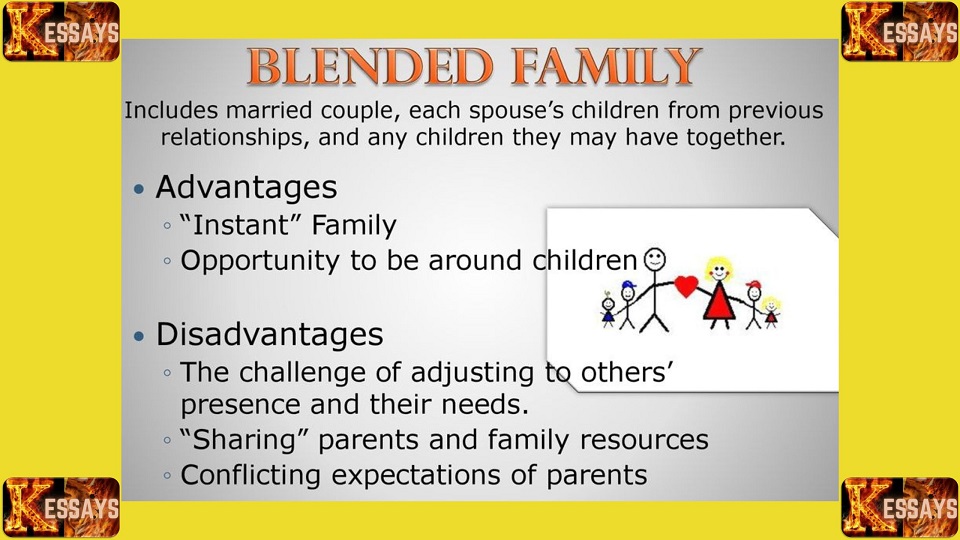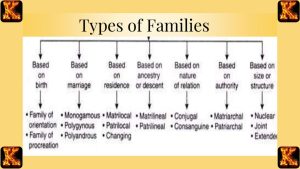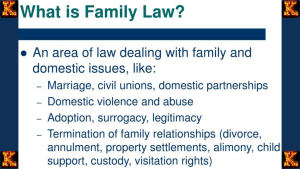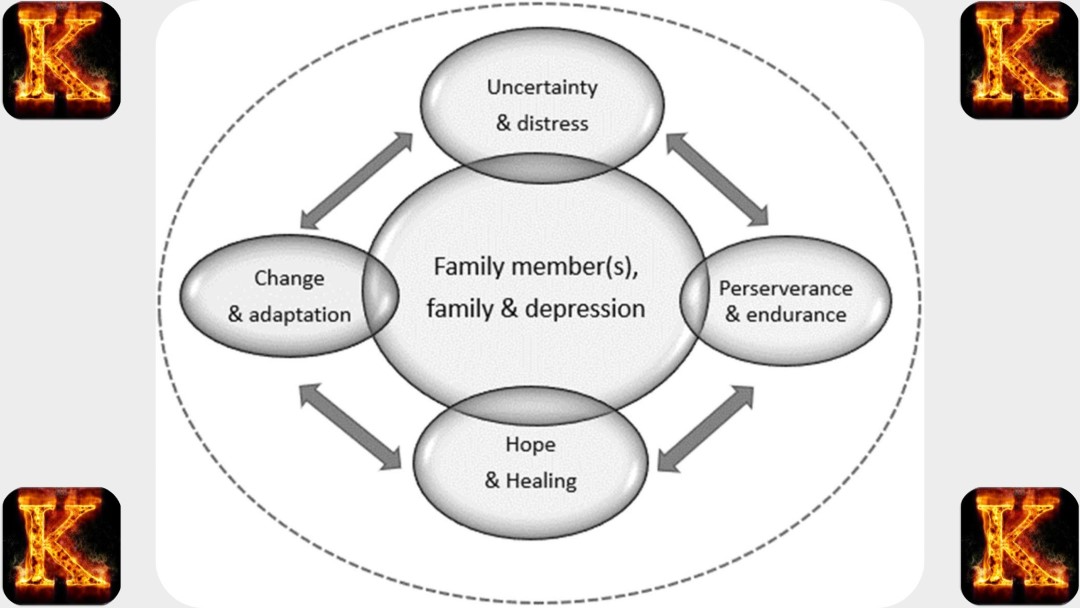The concept of family structure refers to the organization, composition, and interconnected relationships within a family unit, encompassing roles, responsibilities, and dynamics among its members. Family structures vary widely across cultures, societies, and individual contexts, reflecting the diverse ways families are formed, function, and evolve. Understanding these structures is essential for appreciating the complexities of family life and the diverse lived experiences of individuals within them, fostering empathy and informed perspectives in an increasingly interconnected world.
Nuclear Family
Definition and Characteristics
The nuclear family remains a prevalent family structure, typically consisting of one or two parents or caregivers: married, cohabiting, or in a committed partnership, and their dependent children, living together as a relatively independent unit. While often regarded as a traditional model in many societies, the nuclear family has evolved to include diverse configurations, such as same-sex parents, adoptive families, or blended families with stepchildren. Its defining feature is a smaller, self-contained household focused on the immediate family unit.
Role and Dynamics within the Nuclear Family
In a nuclear family, parents or caregivers typically take primary responsibility for nurturing, raising, and supporting their children. They make key decisions about the family’s well-being, provide emotional and financial stability, and guide the socialization process by imparting values, cultural practices, and life skills. Dynamics within nuclear families are often characterized by close-knit relationships, with an emphasis on parent-child bonds and shared experiences. However, roles are increasingly flexible, with many families adopting egalitarian approaches to parenting, household responsibilities, and decision-making, reflecting broader societal shifts toward gender equity and shared caregiving.
Advantages of the Nuclear Family Structure
The nuclear family structure can offer stability, focused parental involvement, and autonomy in decision-making. Its smaller size often fosters strong emotional bonds and a tailored environment for individual growth and development. Nuclear families may also find it easier to adapt to geographic mobility or economic demands due to their compact structure.
Disadvantages of the Nuclear Family Structure
Challenges include limited access to extended support networks, which can lead to social or emotional isolation, particularly in high-stress situations. Financial pressures may be more pronounced, as responsibilities often rest solely on the parents or caregivers. Single-parent nuclear families, in particular, may face heightened challenges, such as balancing work and caregiving or managing time constraints. Additionally, the emphasis on independence can sometimes strain intergenerational connections or cultural traditions that rely on extended family involvement.

Extended Family
Definition and Characteristics
The extended family structure encompasses a broader network beyond the nuclear family, including relatives such as grandparents, aunts, uncles, cousins, in-laws, or other kin. This structure often involves multiple generations living together, in close proximity, or maintaining strong interdependence, sharing resources, responsibilities, and emotional support. Extended families are particularly common in collectivist cultures and communities where intergenerational and communal ties are prioritized, though they are also found in diverse forms globally.
Role and Dynamics within the Extended Family
In an extended family, roles are typically distributed across members, fostering a collaborative approach to family life. Grandparents or elder relatives often play significant roles in child-rearing, offering wisdom, caregiving, or cultural knowledge. Aunts, uncles, or cousins may contribute to emotional or practical support, such as childcare or financial assistance. Dynamics emphasize interconnectedness, mutual aid, and collective decision-making, with a focus on maintaining family cohesion and cultural traditions. However, these dynamics can vary based on cultural norms, geographic proximity, and individual family preferences.
Advantages of the Extended Family Structure
Extended families provide robust emotional and practical support networks, reducing the burden on individual members during challenges like illness or financial hardship. Shared caregiving responsibilities can ease parenting demands and foster strong intergenerational bonds, promoting cultural continuity and a sense of belonging. The diversity of perspectives within the family can also enrich decision-making and problem-solving.
Disadvantages of the Extended Family Structure
Challenges include potential conflicts due to differing values, parenting styles, or expectations among members. Resource strain, such as limited space or finances, can arise in larger households. Effective communication and clear boundaries are essential to navigate these complexities and maintain harmonious relationships, particularly in multigenerational or culturally diverse settings.
Read Also: 6 Types of Family Units
Single-Parent Family
Definition and Characteristics
A single-parent family consists of one parent or caregiver who assumes primary responsibility for raising their child or children. This structure may arise from diverse circumstances, such as divorce, separation, death of a partner, or the deliberate choice to parent independently (e.g., through adoption, fostering, or assisted reproductive technologies). Single-parent families are increasingly recognized as a resilient and valid family model across societies.
Role and Dynamics within the Single-Parent Family
In a single-parent family, the parent takes on multifaceted roles, including provider, caregiver, and emotional anchor. They manage household responsibilities, financial needs, and child-rearing, often balancing work and family life with limited external support. The dynamics between parent and child are often characterized by close emotional bonds, with single parents fostering resilience, independence, and adaptability in their children. Community networks, extended family, or chosen support systems can play a vital role in supplementing these efforts.
Advantages and Disadvantages of the Single-Parent Family Structure
Single-parent families often cultivate strong parent-child relationships due to focused time and emotional investment. Single parents have greater autonomy in decision-making, allowing flexibility in parenting styles and household management. Support from extended family, friends, or community resources can enhance stability and provide diverse role models for children.
Disadvantages of the Single-Parent Family Structure
Single parents may face significant challenges, including financial strain, time constraints, and emotional stress from managing multiple roles. Social isolation can occur without adequate support networks, and children may experience unique pressures depending on the family’s circumstances. Access to community resources, such as childcare, counseling, or financial assistance programs, can help mitigate these challenges and promote family well-being.

Blended Family
Definition and Characteristics
A blended family, also referred to as a stepfamily, is formed when two individuals, at least one of whom has children from a previous relationship, enter into a new partnership, whether through marriage, cohabitation, or a committed relationship. This family structure includes biological parents, stepparents, stepchildren, and, in some cases, half-siblings born within the new partnership. Blended families are increasingly common and diverse, encompassing a range of configurations, including those involving same-sex partners, adoptive children, or multigenerational households.
Role and Dynamics within the Blended Family
The dynamics of a blended family can be intricate as members navigate new roles and relationships. Biological parents typically retain primary caregiving responsibilities, while stepparents may gradually assume supportive or authoritative roles, depending on family preferences and cultural norms. Children often adjust to new siblings, routines, and parental figures, which requires flexibility and patience from all members. Open communication, mutual respect, and empathy are essential for building trust and fostering a sense of belonging. Co-parenting arrangements with former partners, when applicable, also shape the family’s dynamics, emphasizing collaboration and clear boundaries.
Advantages of the Blended Family Structure
Blended families offer opportunities for enriched relationships, providing children with additional parental figures, siblings, and extended family connections. This broader network can enhance emotional support, diverse role models, and shared resources. The process of blending families can also foster resilience, adaptability, and conflict-resolution skills among members, contributing to personal growth.
Disadvantages of the Blended Family Structure
Challenges include navigating complex adjustments, such as adapting to new household routines, managing differing parenting styles, or addressing loyalty conflicts between biological and stepparents. Children may experience emotional stress during transitions, particularly if relationships with stepfamily members are strained. Financial pressures or co-parenting disputes can further complicate dynamics. Strategies like effective communication, family counseling, and creating shared traditions can help build unity and address these challenges.
Read Also: Community Based System Dynamics in Health Equity
Same-Sex Parent Family
Definition and Characteristics
Same-sex parent families consist of two parents of the same gender who serve as primary caregivers for their children. These families may form through adoption, assisted reproductive technologies (e.g., in vitro fertilization or surrogacy), foster care, or children from previous relationships. Same-sex parent families are increasingly recognized and celebrated as a valid and diverse family structure, reflecting growing societal acceptance and legal protections in many regions.
Role and Dynamics within the Same-Sex Parent Family
In same-sex parent families, roles and responsibilities are negotiated based on the parents’ relationship, individual strengths, and the needs of their children. Both parents typically share caregiving, emotional support, and decision-making, fostering an equitable and collaborative environment. Dynamics emphasize mutual respect, open communication, and adaptability, with many families prioritizing inclusivity and advocacy for their children’s well-being. Support from extended family, community networks, or LGBTQ+-affirming organizations often strengthens family resilience.
Advantages of the Same-Sex Parent Family Structure
Same-sex parent families provide nurturing, stable, and loving environments, with research consistently showing that children raised in these families thrive emotionally, socially, and academically, comparable to peers in other family structures. Same-sex parents often demonstrate strong commitment, intentional family planning, and robust support networks, fostering resilience and positive family dynamics.
Disadvantages of the Same-Sex Parent Family Structure
Challenges may include societal stigma, discrimination, or lack of acceptance in certain communities, which can impact family members’ well-being. Legal barriers, such as inconsistent recognition of parental rights across jurisdictions, may also pose difficulties. Access to LGBTQ+-inclusive resources, supportive communities, and legal protections helps mitigate these challenges, promoting a positive and affirming family environment.

Adoptive Family
Definition and Characteristics
An adoptive family is formed when parents legally adopt a child or children, assuming permanent responsibility as their caregivers. Adoption can occur through domestic or international processes, foster care, or private arrangements, and adoptive families encompass diverse backgrounds, including single parents, same-sex couples, or blended families. The defining characteristic is the legal and emotional commitment to provide a stable, loving home for the adopted child.
Role and Dynamics within the Adoptive Family
Adoptive parents take on primary responsibility for nurturing, supporting, and raising their children, creating a secure and affirming environment. Dynamics may involve unique considerations, such as supporting a child’s identity exploration, addressing questions about their origins, or maintaining connections with birth families in open adoptions. Adoptive families often prioritize open communication and cultural sensitivity, particularly in transracial or international adoptions, to foster a strong sense of belonging and self-esteem in their children.
Advantages and Disadvantages of the Adoptive Family Structure
Adoptive families provide children with stable, loving homes, offering opportunities for growth, security, and emotional support. Adoptive parents, often thoroughly vetted and prepared, demonstrate deep commitment to their children’s well-being. The diversity of adoptive families can enrich children’s cultural and social experiences, particularly when supported by inclusive practices.
Disadvantages of the Adoptive Family Structure
Challenges may include navigating identity or attachment issues, especially for children adopted at older ages or across cultural or racial lines. Open adoptions can involve complex relationships with birth families, requiring clear boundaries and communication. Support from adoption agencies, counseling, and peer networks can help families address these complexities and build strong, cohesive bonds.
Read Also: Reflections on “Picking Cotton” & the Innocence Project
Foster Family
Definition and Characteristics
A foster family provides temporary care for children who cannot live with their birth parents due to circumstances such as abuse, neglect, parental incarceration, or other crises. Foster families offer a safe, nurturing environment while supporting reunification with birth families or facilitating alternative permanent placements, such as adoption. Foster care systems vary globally, but the core role of foster families is to provide stability and care during a transitional period.
Role and Dynamics within the Foster Family
Foster parents assume responsibility for meeting the physical, emotional, and developmental needs of children in their care, often collaborating with child welfare agencies, birth families, and support services. They provide stability, advocacy, and a sense of normalcy, while navigating the temporary nature of their role. Dynamics may involve building trust with children who have experienced trauma, managing relationships with birth families, or preparing children for future transitions. Foster parents require resilience, empathy, and flexibility to address these complex dynamics effectively.
Advantages of the Foster Family Structure
Foster families offer critical support, providing children with safe, loving environments during challenging times. They promote stability, emotional growth, and opportunities for healing, often serving as a bridge to reunification or permanency. Foster parents typically receive training, resources, and support from child welfare systems, enhancing their ability to meet children’s needs.
Disadvantages of the Foster Family Structure
Challenges include navigating the emotional complexities of temporary caregiving, such as forming attachments while preparing for potential separations. The child welfare system can be bureaucratic, creating uncertainties about placement duration or outcomes. Children’s trauma histories may require specialized care, adding to the demands on foster parents. Access to trauma-informed training, counseling, and peer support can help foster families manage these challenges and provide effective care.
Read Also: Argumentative Essay on Abortion
Grandparent-Headed Family
Definition and Characteristics
Grandparent-headed families, often referred to as skip-generation or kinship care families, occur when grandparents assume primary caregiving responsibilities for their grandchildren. This structure may arise due to parental absence, illness, substance use, incarceration, economic hardship, or other circumstances. These families are increasingly common across diverse cultural and socioeconomic contexts, often serving as a vital safety net for children.
Role and Dynamics within the Grandparent-Headed Family
Grandparents in these families take on parental roles, providing emotional support, stability, and guidance while navigating the demands of caregiving at an older age. Dynamics often center on fostering a secure environment, leveraging grandparents’ life experience and familial bonds. Grandparents may balance their own health, financial, or social needs with those of their grandchildren, requiring adaptability and resilience. Support from extended family, community networks, or social services is often critical to sustaining these roles.
Advantages of the Grandparent-Headed Family Structure
Grandparent-headed families offer grandchildren a familiar, loving environment, often preserving cultural traditions and family continuity. Grandparents bring wisdom, patience, and strong emotional bonds, fostering stability and security. These families can provide a sense of belonging, particularly for children who have experienced disruption or trauma.
Disadvantages of the Grandparent-Headed Family Structure
Challenges include financial strain, especially for grandparents on fixed incomes, and potential health or mobility limitations due to age. Social isolation, limited access to resources, or navigating legal guardianship issues can add complexity. Community resources, such as kinship care programs, support groups, and respite care, can help grandparents manage these challenges and maintain a nurturing home.

Co-Parenting Family
Definition and Characteristics
Co-parenting families consist of separated, divorced, or non-cohabiting parents who collaboratively share responsibilities for raising their children. This structure often involves joint custody, shared parenting time, or coordinated decision-making, prioritizing the child’s well-being across separate households. Co-parenting is increasingly common as families seek flexible, child-centered arrangements post-separation.
Role and Dynamics within the Co-Parenting Family
In co-parenting families, both parents actively participate in their children’s lives, sharing responsibilities for emotional, educational, and practical needs. Dynamics emphasize consistent communication, mutual respect, and collaboration to maintain stable routines and rules across households. Parents may navigate complex emotions or logistical challenges while fostering a unified approach to parenting. Support from mediators, co-parenting apps, or family networks can enhance effective coordination.
Advantages of the Co-Parenting Family Structure
Co-parenting allows children to maintain meaningful relationships with both parents, promoting emotional security and stability. It encourages cooperative problem-solving and a child-centered focus, fostering resilience in children. Successful co-parenting can also model healthy conflict resolution and communication skills.
Disadvantages of the Co-Parenting Family Structure
Challenges include potential conflicts due to differing parenting styles, communication breakdowns, or unresolved personal tensions between parents. Logistical complexities, such as coordinating schedules or managing financial responsibilities, can also arise. Mediation, counseling, or co-parenting resources can support parents in navigating these challenges and maintaining a collaborative, child-focused relationship.
Read Also: Oil Painting Medium: Analyzing Iconic Works
Single-Sibling Family
Definition and Characteristics
A single-sibling family, also known as a one-child family, consists of one or two parents raising a single child. This structure may result from personal choice, fertility challenges, economic considerations, or other circumstances. Single-sibling families are increasingly common globally, reflecting diverse cultural and lifestyle preferences.
Role and Dynamics within the Single-Sibling Family
In single-sibling families, parents focus their attention, resources, and emotional support on their only child, fostering a close parent-child bond. Dynamics often emphasize individualized care, with parents tailoring their approach to the child’s unique needs, interests, and development. The child may develop strong independence, self-reliance, and maturity, though dynamics can vary based on cultural expectations or family circumstances. Parents often encourage external social connections to complement family interactions.
Advantages of the Single-Sibling Family Structure
Single-sibling families allow parents to provide focused attention, resources, and opportunities tailored to their child’s needs, fostering academic, emotional, and personal growth. The close parent-child relationship can enhance communication and emotional security. Parents may also have greater flexibility in managing family resources and activities.
Disadvantages of the Single-Sibling Family Structure
Potential challenges include concerns about socialization or the absence of sibling relationships, which may impact peer interaction skills. Children may face pressure to meet parental expectations due to the family’s focused dynamic. Parents can mitigate these concerns by encouraging participation in social activities, fostering connections with peers or extended family, and promoting a balanced environment for growth.

Conclusion
Recognizing and valuing the diverse array of family structures is fundamental to fostering inclusive, empathetic, and resilient communities. From nuclear and extended families to same-sex parent, adoptive, foster, grandparent-headed, co-parenting, and single-sibling families, each structure brings unique strengths, challenges, and dynamics that shape the experiences of its members. By understanding and respecting these differences, we cultivate a culture of acceptance that honors the varied ways families are formed and thrive. Embracing this diversity not only enriches our collective understanding of family life but also promotes equity, strengthens community bonds, and supports the well-being of individuals across all family configurations. Through education, open dialogue, and access to resources, we can champion a society that celebrates and uplifts every family’s unique journey.
